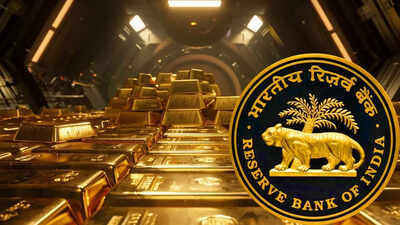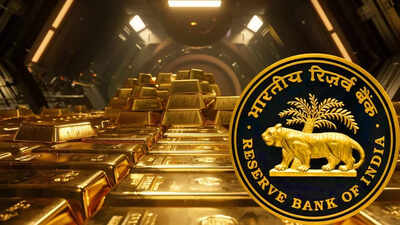Gold reserves vs dollar assets: Why is RBI buying gold & reducing investments in US treasury securities – top points to know

In a strategic shift, India is betting on gold rather than dollar-based assets for its foreign exchange reserves. The Reserve Bank of India (RBI) is showing a preference for gold over dollar-based investments, data suggests. As of October 10, India’s foreign exchange reserves stood at $698 billion.Data from RBI and the US Department of Treasury indicates that whilst increasing its gold reserves, the central bank has simultaneously reduced its US Treasury Securities investments.
India’s Gold Reserves: Top points
- The central bank has added 600 kilograms to its gold reserves this fiscal year, with the total gold with RBI now crossing the 880 tonnes mark.
- At the same time, RBI’s US treasury securities holdings have fallen to a seven-month low of $219 billion, according to an ET report.
- The central bank acquired 200 kgs of gold in the period ending September 26 and 400 kgs for the week ending June 27 this year.
- India’s gold reserves achieved a significant milestone recently crossing the $100 billion value mark to reach $102.365 billion as of October 10, according to central bank records.
- RBI’s forex reserves now comprise 13.6% gold as of September 26, an increase from 9.3% a year ago when total reserves were at their peak.
Why is India buying gold & reducing dollar assets?
RBI’s US treasury securities investments showed a drop for July, according to the latest available US Department of Treasury data.India has reduced its US treasury securities holdings to $219.7 billion, down from $227.4 billion in the previous month and $238.8 billion in the previous year, according to US Department of Treasury statistics.The aggregate central bank investments in US treasury bills amount to $9.1 trillion, with Japan leading at 1.1 trillion, whilst the UK and China follow with $899 billion and $730.7 billion respectively.“There appears to be a policy of diversifying forex reserves. Gold is a good choice given also an upside in value, although that may not be a consideration for the central bank,” said Madan Sabnavis, chief economist, Bank of Baroda.“From a market perspective there is uncertainty in the state of the US economy and implications of tariffs. Interest rate policy also is uncertain given inflation potential. This supports the action of buying gold,” he was quoted as saying.International central banks have maintained their practice of increasing gold reserves despite rising prices, considering gold as a secure asset during periods of economic instability.According to the World Gold Council’s analysis of IMF and central bank data, global central banks increased their net gold holdings by 15 tonnes in August, as reported by ET on October 7.






